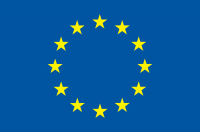

The objective of ISES was the development of ICT building blocks to integrate, complement and empower existing tools for design and operation management to a Virtual Energy Lab (VEL). This will allow evaluating, simulating and optimizing the energy efficiency of products for built facilities and facility components in variations of real life scenarios before their realization, acknowledging the stochastic life-cycle nature. The focus was on buildings, factories and warehouses because in buildings about 40% of the global energy is used and 30% of CO2 emissions and solid waste is created. There is a huge market for more energy-efficient design of new buildings and for refurbishing of the huge building stock through energy-efficient component products. The goal of the project was to increase, by an order of magnitude, the quality of energy-efficiency in design through the development of an In-Silico Energy Simulator Laboratory, based on an interoperable ontology-supported platform. The focus of the RTD work was on multi-model design and testing, stochastic lifecycle analysis/simulation in combination with new supporting ontology and interoperability tools and services, and respective re-engineering of existing tools, making them more intelligent and smartly interoperable. Further goals were the combination of energy profile models with product development STEP models and building and facility BIM models. The VEL was configured as an ontology-controlled SOA system with distributed services, distributed modelling and analysis/simulation tools and distributed data sources. This allows concentrating the RTD work on ICT gaps, whereas existing, market-proof services, tools and data sources can be incorporated nearly development-free. The extended focus was on: (1) the development of optimal support for inventing and using innovative façade elements, and (2) the elaboration of the optimal computable stochastic model in relation to the design phase in order to make stochastic considerations applicable in daily practice.
Innerhalb der Projektlaufzeit erfolgte eine Integration und Kopplung bestehender Werkzeuge für den Gebäudeentwurf, das Facility-Management und thermische Energie-Simulationen in ein virtuelles Energielabor (VEL). Mit Hilfe stochastischer Verteilungen der Randbedingungen ist eine Analyse von verschiedenen Designalternativen schon in frühen Projektphasen möglich. Im Fokus stand auch die Evaluierung der komplexen Simulationsergebnisse und Darstellung für Architekten und andere Fachplaner.